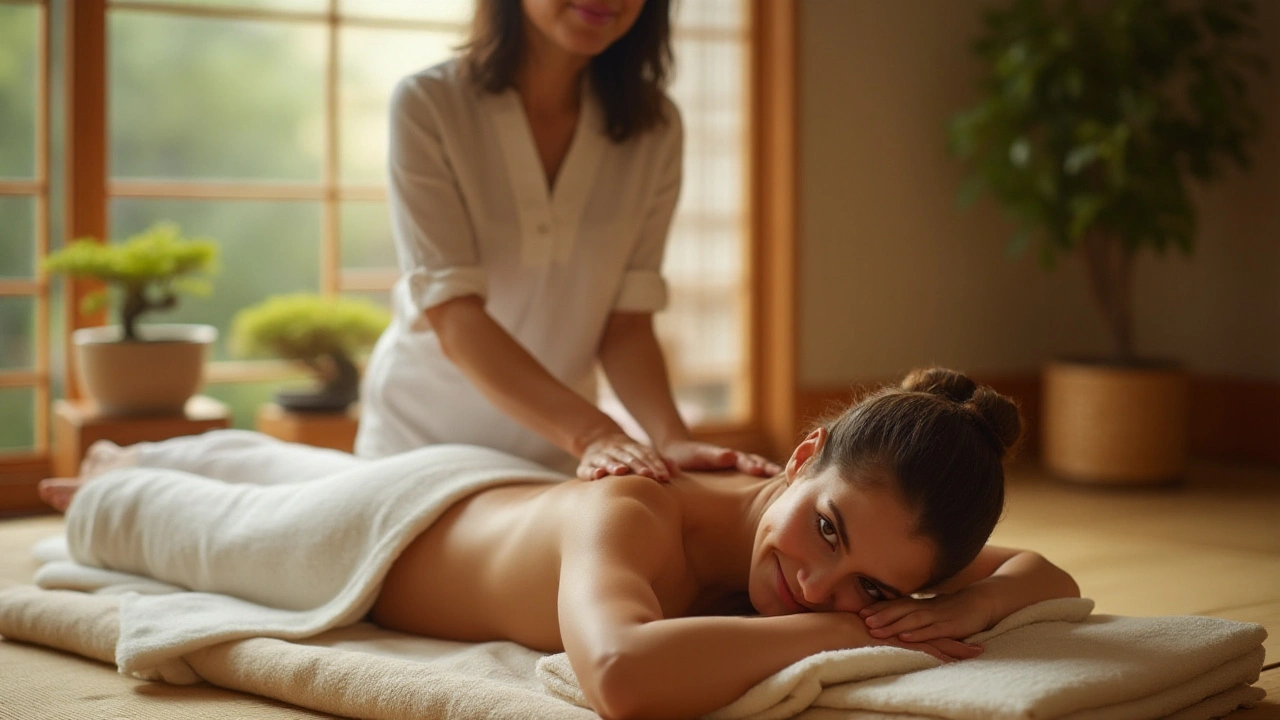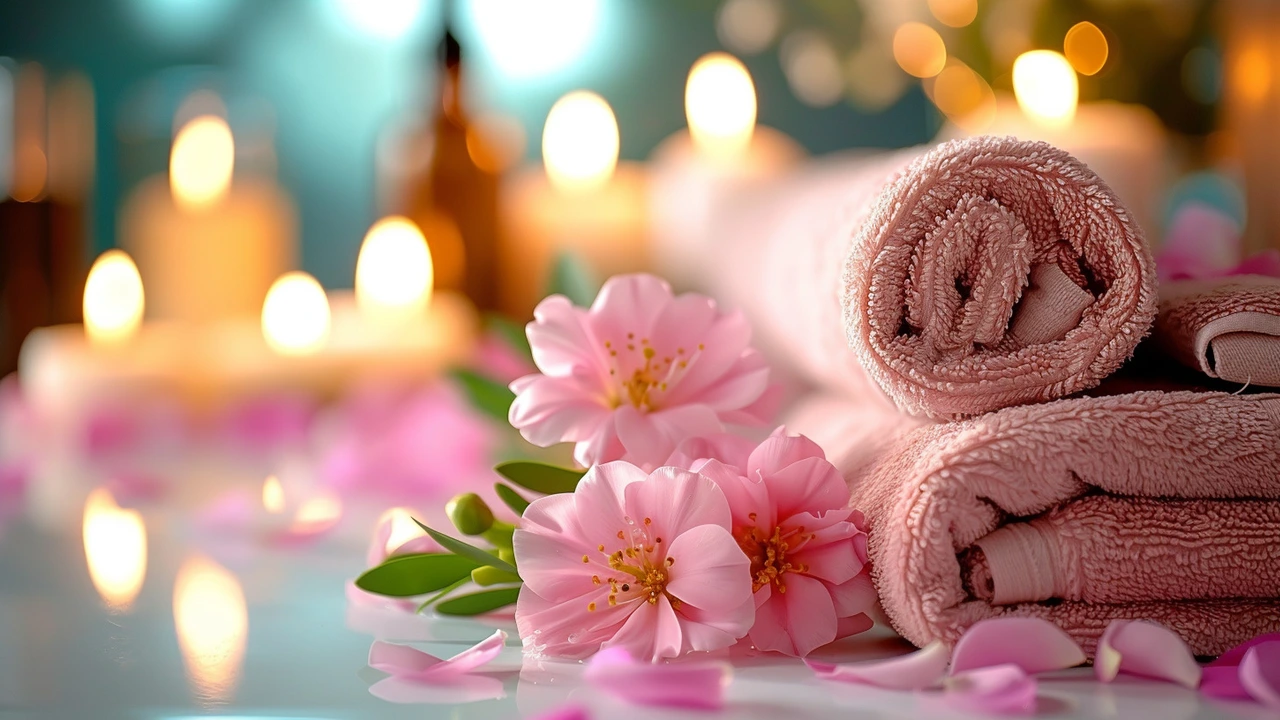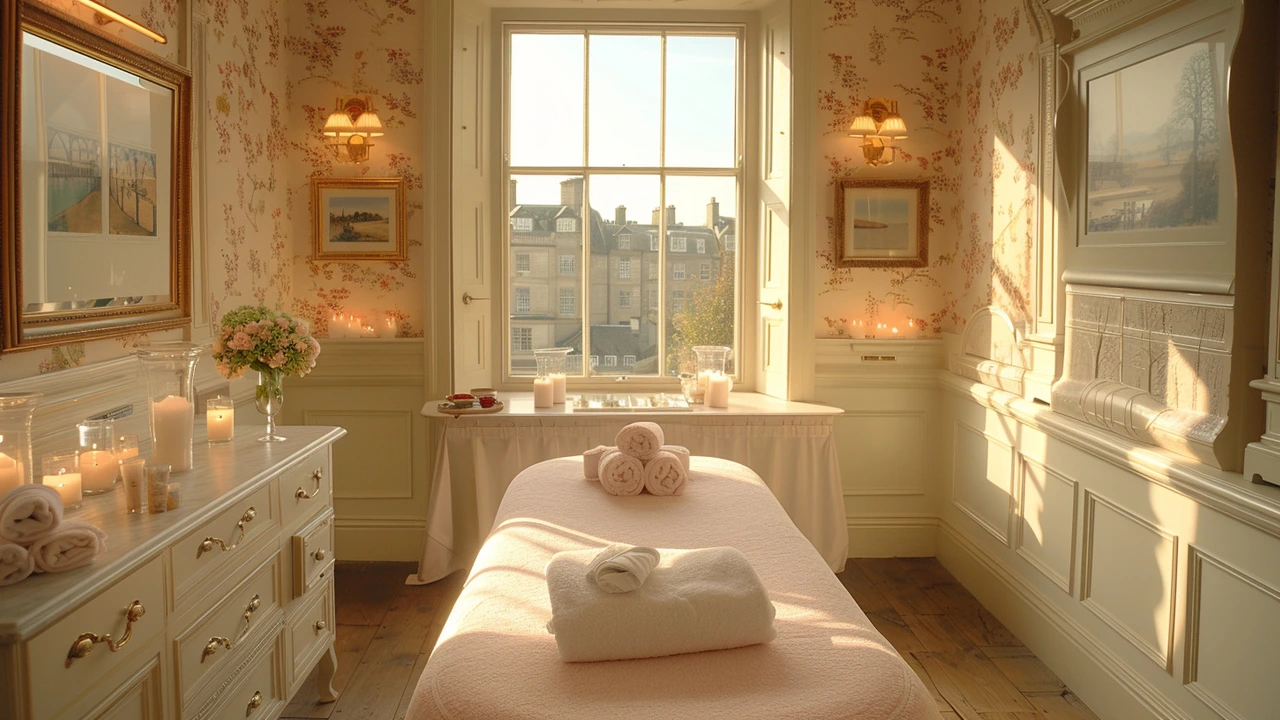Exploring the Timeless Allure of the Hammam: A Historical and Relaxing Experience

The Hammam, often referred to as the Turkish bath, is more than just a place for cleansing the body. It is an ancient tradition that has woven itself into the cultural fabric of societies across the globe. Tracing its roots back to the Roman bathhouses, the Hammam has evolved through centuries, adapting to various cultural nuances, yet retaining its core as a space for relaxation and community.
Historically, the Hammam served as a communal gathering place, offering not just physical refreshment but also a venue for social interaction and cultural exchange. Today, it remains a testament to the harmonious blend of wellness and leisure, inviting visitors to experience its steam-filled chambers where everyday worries can melt away with each drop of sweat.
In the heart of a Hammam, the senses are enveloped by warmth and the gentle aroma of eucalyptus, setting the stage for a unique ritual that cleanses the body and clears the mind. Whether you are looking to experience the Hammam for its historical allure or its soothing comfort, this journey through time and relaxation promises to be one of discovery and peace.
- Origins of the Hammam
- Cultural Significance
- Modern-Day Hammam Practices
- Health Benefits
- Cultural Variations
- Tips for Visiting a Hammam
Origins of the Hammam
The Hammam finds its origins deeply rooted in the ancient traditions of the Roman thermae, renowned for their elaborate bath complexes which served both hygienic and social purposes. As the Roman Empire expanded across Europe and into the Middle East, they brought the concept of heated baths with them, adapting their architectural and cultural essence to suit different locales. Notably, when the Byzantine Empire emerged, they incorporated the bathing culture into their own, eventually passing it on to the Ottoman Turks. It was under the Ottomans that this bathing ritual truly blossomed, transforming the Roman-style baths into what we recognize today as the Hammam.
The evolution of bathhouses from Roman times to the height of the Ottoman Empire reflects a fascinating interplay of necessity, ritual, and social structure. The Romans used their baths as centers of socialization and health, a purpose that the Ottomans embraced and expanded to fit their own cultural ethos. In Ottoman society, Hammams played a pivotal role, not only as places for bodily cleansing but also as spaces for community gathering and ritual purification before prayer. These establishments were often attached to mosques, serving the additional function of charity, as they were accessible to people of varied social and economic backgrounds. Hammams were crafted as elaborate sanctuaries featuring a series of progressively warmer rooms, leading bathers from tepid to steamy environments, climaxing in intense heat that promoted detoxification and relaxation.
Over time, the design and function of Hammams evolved to adapt to local needs and aesthetics. In many Islamic societies, Hammams were particularly vital in cementing community bonds, providing equal access to cleanliness which was a societal expectation. The architectural blueprint of a typical Ottoman Hammam included intricate geometric designs, marble slabs where bathers would recline, and separate areas for men and women. These elements combined to create an atmosphere that was both meditative and grandiose. It is interesting to note that while the core concept of the Hammam has remained consistent, its adaptation to cultural contexts has allowed it to persist through centuries.
The Hammam isn't just about the physical act of washing; it is an experience that enables a person to reflect, meditate, and emerge not just cleansed but rejuvenated," observed cultural historian Leila Ahmed in her study of traditional bathing practices across different societies.
The significance of the Hammam in historical terms cannot be overstated. It was as much about the celebration of leisure and luxury as it was about the essential practice of hygiene. Even today, while modern spa facilities abound and personal hygiene standards have transformed, the Hammam holds a distinctive appeal. Its atmosphere, steeped in echoes of the past, invites people to partake in a timeless ritual that transcends the mundane and fosters serenity and fellowship. Thus, the Hammam, in its many forms, continues to be a cherished element of cultural heritage, drawing in those seeking both the warmth of history and the embrace of relaxation.
Cultural Significance
The cultural significance of the Hammam is deeply rooted in societies where it serves as a cornerstone of community life and personal well-being. Historically, the Hammam was much more than just a means to achieve cleanliness; it was a hub of social activity and a vital part of daily life. In regions such as the Middle East and North Africa, the Hammam has been a gathering place where individuals from all walks of life connect, share stories, and foster a sense of unity. It played a crucial role in social dynamics, allowing people to interact outside formal settings.
The architecture of the Hammam itself is a testament to its cultural importance. Many traditional Hammams are ornately designed with domed ceilings and stunning mosaics that draw from Islamic art and architecture. These spaces serve not just functional needs but also as aesthetic havens that uplift the spirit, demonstrating the value placed on beauty and tranquility in these cultural practices. The tradition of visiting the Hammam often included rituals and customs passed down through generations, highlighting its role in maintaining cultural heritage.
In Turkey, the Hammam experience is intimately tied to cultural identity, with historic bathhouses like the Haseki Hürrem Sultan Hamamı in Istanbul serving as landmarks of cultural history. The Hammam also plays a significant role in life’s important events, such as weddings, where brides partake in a special pre-wedding ritual called the 'Gelin Hamamı' to cleanse and prepare both body and spirit. According to historical records, this communal bathing culture has been viewed as an opportunity not only for cleanliness but also as a time for reflection, relaxation, and spiritual renewal.
An interesting aspect of the Hammam is its dual focus: purifying both the external and the internal. The importance of the Hammam in Islamic countries is evident in the belief that physical cleanliness reflects spiritual purity. As such, regular visits to the Hammam are encouraged as part of religious devotion. In places like Morocco, Hammams are frequented weekly, becoming an integral part of life, symbolizing a communal spirit that strengthens societal bonds.
“The Hammam is a unique microcosm where the cultural, spiritual, and social fibers of society are interwoven, offering health in both body and soul.” – Professor Nadine Kaadan, Cultural Anthropologist
To experience a Hammam is to step into a world where history and present coexist, offering a rare opportunity to engage with tradition while enjoying modern comforts. Whether gracing the public bathhouses of Marrakech or the private paths in small Anatolian villages, the Hammam remains an emblem of timeless cultural significance and a beacon of ancient grace in modern living.
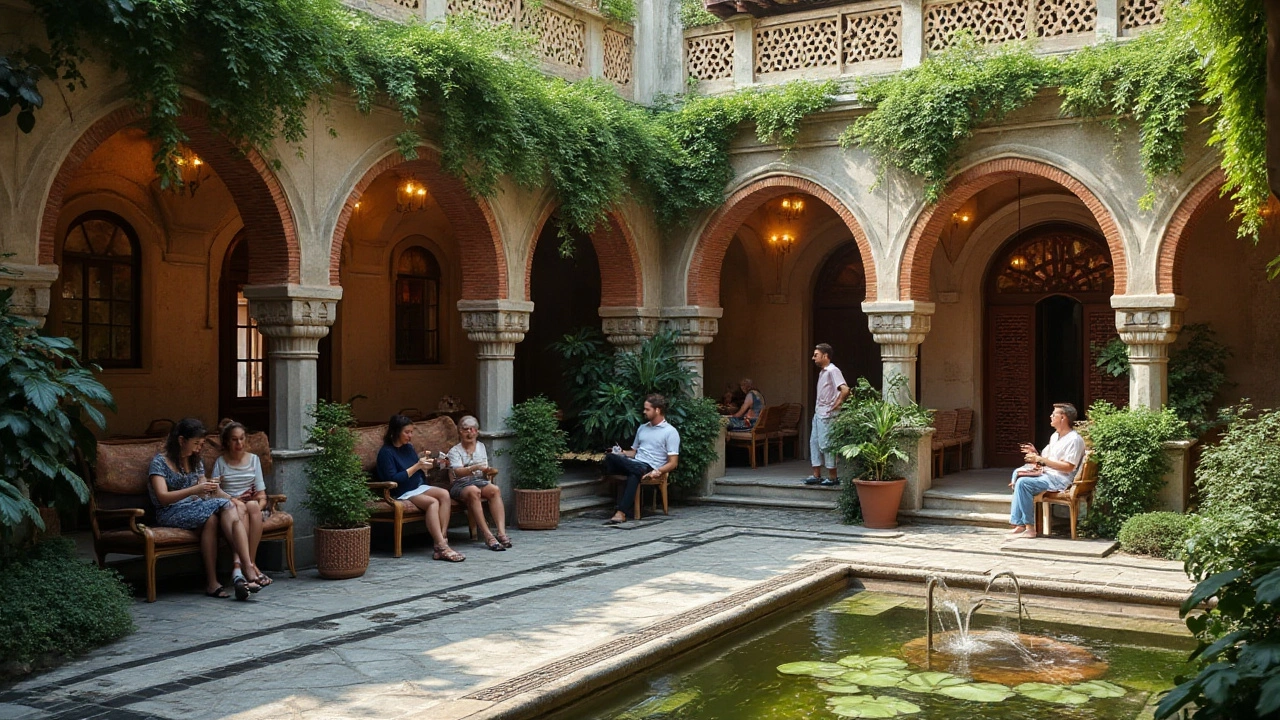
Modern-Day Hammam Practices
In today's world, the Hammam continues to enchant as a haven for wellness and relaxation, seamlessly blending age-old traditions with modern comfort. As the world grows ever more hurried, the appeal of the leisure and unwinding offered by Hammam rituals is undeniable. Modern Hammams, whether in Istanbul, Marrakech, or even luxury spas worldwide, uphold this ancient practice while introducing contemporary innovations that enhance the experience.
Visitors stepping into a modern Hammam are introduced to a tranquil atmosphere resonating with the gentle murmurings of running water and dimly lit surroundings that encourage relaxation. The process usually begins in a warm room, often referred to as the 'warm chamber,' where the body gradually adapts to the invigorating humidity and heat. Here, bodies and minds slowly unwind, paving the way for deeper revitalization. The steam opens up the skin's pores, creating ideal conditions for the body to naturally detoxify.
Next, patrons often move to the hot room, known for its intense warmth, where the body sweats out impurities. This process heightens circulation and prepares the skin for the traditional exfoliating scrub. This cleansing ritual has been practiced for centuries and involves the skillful use of a coarse mitt, known as a 'kese.' The skilled attendant works away at the top layer of the skin, removing dead skin cells, invigorating the spirit, and leaving the body smoother and more refreshed than ever.
In an article about the modern Hammam experience, National Geographic describes it as "an extraordinary journey into a world where silence, sensory indulgence, and tradition combine to revitalize body and soul."
The soothing touch of skilled bath attendants, using aromatic soaps, invigorates bathing traditions that are centuries old.This experience is beneficial not only for the skin but also contributes significantly to mental tranquility, making Hammams a sought-after escape from daily stress.
After exfoliation, the Hammam journey may lead to a series of optional indulgent treatments. Many modern facilities offer a repertoire of luxurious options such as massages enhanced with essential oils, warm mud treatments, or rejuvenating facials. These complement the fundamental services, allowing visitors to tailor their experience based on personal preferences and wellness goals.
Today's Hammams also showcase significant cultural variations adapting to regional styles and tastes. For instance, in Morocco, black olive soap, known as 'beldi,' is favored for its deep cleansing properties, while in Turkey, the use of eucalyptus-infused steam rooms remains a popular choice. These variations make each visit unique, preserving the rich tapestry of history and cultural nuances.
Beyond individual relaxation, the Hammam's social aspect also continues to shine. It serves as a place where conversations flow as freely as the water itself, bringing friends, family, or even strangers together in peaceful camaraderie. Modern-day Hammams succeed in preserving their communal roots despite evolving into more personalized, sometimes solitary, experiences.
Health Benefits
The Hammam is renowned for offering numerous health benefits that contribute to both physical and mental well-being. At the heart of these benefits is the heat, which is a prominent feature of the Hammam experience. The warmth found in Hammams helps to increase blood circulation throughout the body, facilitating better oxygen transport to different organs, which in turn enhances their overall function. Improved circulation not only aids in nutrient delivery but also accelerates the removal of toxins from the body, making it a natural detoxification method. As the heat opens up pores, it encourages sweating, which is the body's primary way of eliminating impurities and unwanted substances.
Another notable health advantage of visiting a Hammam is its effect on the respiratory system. The steam-filled environment loosens mucus and opens the airways, making it particularly beneficial for individuals dealing with respiratory issues such as asthma or bronchitis. Additionally, the steam infuses the respiratory tract with moisture, soothing irritation and offering relief from symptoms of congestion. This soothing effect can be compared to the relief one might experience when using a humidifier during a cold, however, in a Hammam, the benefits are amplified by the sheer scope of the environment and the natural elements involved.
Muscle relaxation is yet another significant benefit derived from the Hammam experience. The warm temperatures help to ease tension in the muscles, making it an ideal post-exercise activity to prevent soreness and enhance recovery. This warmth encourages the muscles to relax and lengthen, which can alleviate pain and reduce stiffness in conditions such as arthritis. It has even been noted by physiotherapists that regular exposure to heat through methods such as those found in Hammams can enhance joint mobility. Ryder, an experienced physiotherapist once shared,
"The consistent heat exposure experienced in a Hammam can significantly promote muscle elasticity and flexibility over time."
Moreover, the mental health benefits of a Hammam should not be overlooked. In today’s fast-paced world, stress relief is highly sought after, and the Hammam provides a perfect sanctuary. The tranquil environment helps in reducing stress levels, as the soothing warmth naturally calms the central nervous system. This calming effect has been linked to better sleep patterns, making regular use of a Hammam a potential remedy for insomnia. Studies indicate that taking time for relaxation in warm environments can lower cortisol levels—the hormone responsible for stress—thus fostering a more balanced mood and overall emotional health.
One unexpected benefit is related to skin health. As the steam works its magic to open pores and cleanse the skin from within, the result is often a clearer, more radiant complexion. The exfoliation process, usually a part of the Hammam routine, removes dead skin cells, promoting the regeneration of new cells and leaving the skin feeling softer and looking refreshed. Regular exposure to the Hammam experience can enhance skin elasticity and reduce the appearance of cellulite, providing both an aesthetic and tactile improvement.
Moreover, evidence suggests that habitual participation in Hammam rituals can lead to a decrease in blood pressure. The benefits of heat therapy extend to heart health, as the stress-relieving environment contributes to reduced blood pressure levels. In a society where hypertension is a growing concern, the natural, holistic approach of a Hammam offers a serene method to support heart health and longevity.
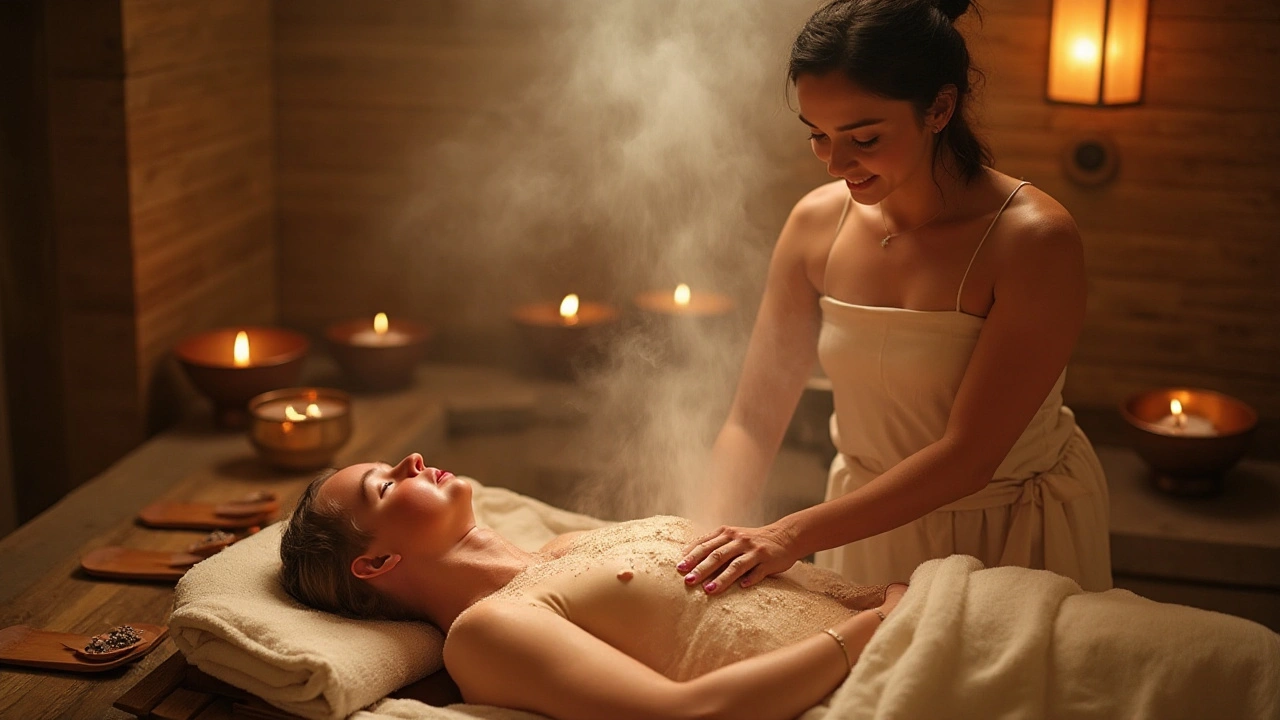
Cultural Variations
The Hammam holds a unique place in many cultures across the globe, each bringing their distinct twist to the traditional practice. Originating in Roman times, the Turkish bath was embraced by the Ottomans, who refined it into a spiritual, social, and wellness experience, integrally linking it to Islamic practices of cleanliness and endowing it with architectural grandeur. Over time, the Hammam has become synonymous with opulence and tranquility, featuring intricate tilework and breathtaking domed ceilings. In North Africa, particularly in Morocco where it is often called a 'marabout,' the Hammam is a social hub, bustling with communal vibrance. Here, it combines cleansing rituals with the aromatic allure of native argan oil and clay, creating a sensory spectacle whilst acting as a grooming ritual that transcends simple hygiene practices.
Meanwhile, in the Middle East, these baths are steeped in cultural tradition and remain vibrant centers for social gatherings as much as for relaxation. Families and friends visit Hammams together, discussing daily life, celebrations, and important social events within the steamy comforts. This tradition is a cherished part of life in places like Syria and Lebanon, where the Hammam still represents a sanctuary. Across Europe, the Romans have imparted their influence where cities like Budapest cherish their own form of public bathing. The legacy lives on in public baths that blend medieval Turkish designs with vibrant, bustling atmospheres and are accessible to everyone, presenting a unique juxtaposition of history and modernity.
Western Influence and Modern Adaptations
As the concept moved to the West, the wellness aspect gained more emphasis. Many Western cities have absorbed this ancient practice into contemporary spa treatments, often offering a modern take on the traditional Hammam experience. These are typically found in luxurious settings, with emphasis on pampering and relaxation that might not focus as heavily on traditional techniques. An increasing number of these Hammams are now focused on incorporating sauna elements and exotic infusions, presenting a fusion of cultures with local tastes. According to a 2023 survey by the Spa Industry Association, the blending of traditional with modern elements in Hammams has increased customer engagement in spas by around 20 percent, showcasing the timeless appeal of this wellness tradition.Each region has infused the Hammam with its cultural hues, creating a rich tapestry of practices that invite exploration and appreciation. For example, a visitor said:
'The Hammam in Istanbul is different from the one I found in Marrakesh – each with its personality, yet each equally mesmerizing.'Such stories and experiences share the diverse allure of the Hammam, as it offers more than just a bath but a vivid narrative of cultural exchange, historical continuity, and personal reflection.
Tips for Visiting a Hammam
Stepping into a Hammam can be a mystical experience that leaves visitors both relaxed and rejuvenated. However, first-time visitors might find the process a bit daunting given the rich traditions and rituals involved. Here are some essential tips to help you make the most of your Hammam visit and ensure it is a delightfully unforgettable experience.
Prepare for Your Visit
Before heading to the Hammam, it's wise to familiarize yourself with the norms and etiquette. Firstly, understand that the Hammam is a place for deep cleansing and relaxation, so leave behind any electronic devices to fully immerse yourself in the experience. It's customary to wear a pestemal, a thin cotton wrap, rather than a full swimsuit. Many Hammams provide this, but it’s perfectly acceptable to bring your own. Ensure you have a pair of flip-flops or non-slip sandals, as the floors can be quite damp. The Hammam environment is often dimly lit and aromatic, designed to invigorate the senses while promoting tranquility.
Navigating the Hammam Experience
Once inside the Hammam, you’ll typically move through a series of rooms with varying temperatures. Begin in the warm room to allow your body to acclimate. Spend about 15 minutes here to allow your pores to open and your muscles to relax. From there, proceed to the hot room, where you might find a large stone slab known as the göbek taşı. Lying on this heated stone maximizes the detoxifying benefits. Don't shy away from engaging with the attendants, known as tellaks, who perform the exfoliation and massage rituals. Their expertise draws from generations of practice, ensuring the best Hammam experience.
Embrace the Rituals
As you move through the Hammam, indulge in the traditional rituals. The scrubbing is a particularly deep cleansing process, often done using a rough mitt known as a kese. Let the tellak guide you through this process, which is both invigorating and refreshing. Be prepared; it might feel more intense than a typical spa exfoliation, but the results are positively transformative. After the body scrub, a soap massage awaits, where a rich, foamy lather envelops your skin, leaving it exceptionally soft.
Aftercare and Relaxation
After you’ve completed the Hammam rituals, it's crucial to give yourself some time to unwind. Retreat to the cool room or relaxation area, where you should sip on traditional Turkish tea or cool water to rehydrate. Reflect on the experience as your body transitions back to normal temperature, making this phase an integral part of your visit. "The beauty of the Hammam," writes historian Amanda Fortini, "is in its ability to combine the ancient with the modern, offering peace in a fast-paced world."
Health Benefits and Considerations
Visiting a Hammam offers myriad health benefits, including improved circulation, stress reduction, and a profound sense of well-being. Nonetheless, it’s essential to listen to your body. If at any point you feel dizzy or unwell, take a break in the relaxation area. Hydration is key; be sure to drink plenty of water before and after your session. According to a recent study, regular visits to a steam or Turkish bath can help alleviate symptoms of various respiratory issues, highlighting the potential therapeutic benefits these ancient spaces provide.
Whether you're indulging in a solo retreat or sharing the experience with friends or loved ones, visiting a Hammam is a journey back through time and an opportunity to reconnect with oneself. Let the traditions guide you, embrace the serenity, and take home not just cleaner skin, but a lighter spirit.


